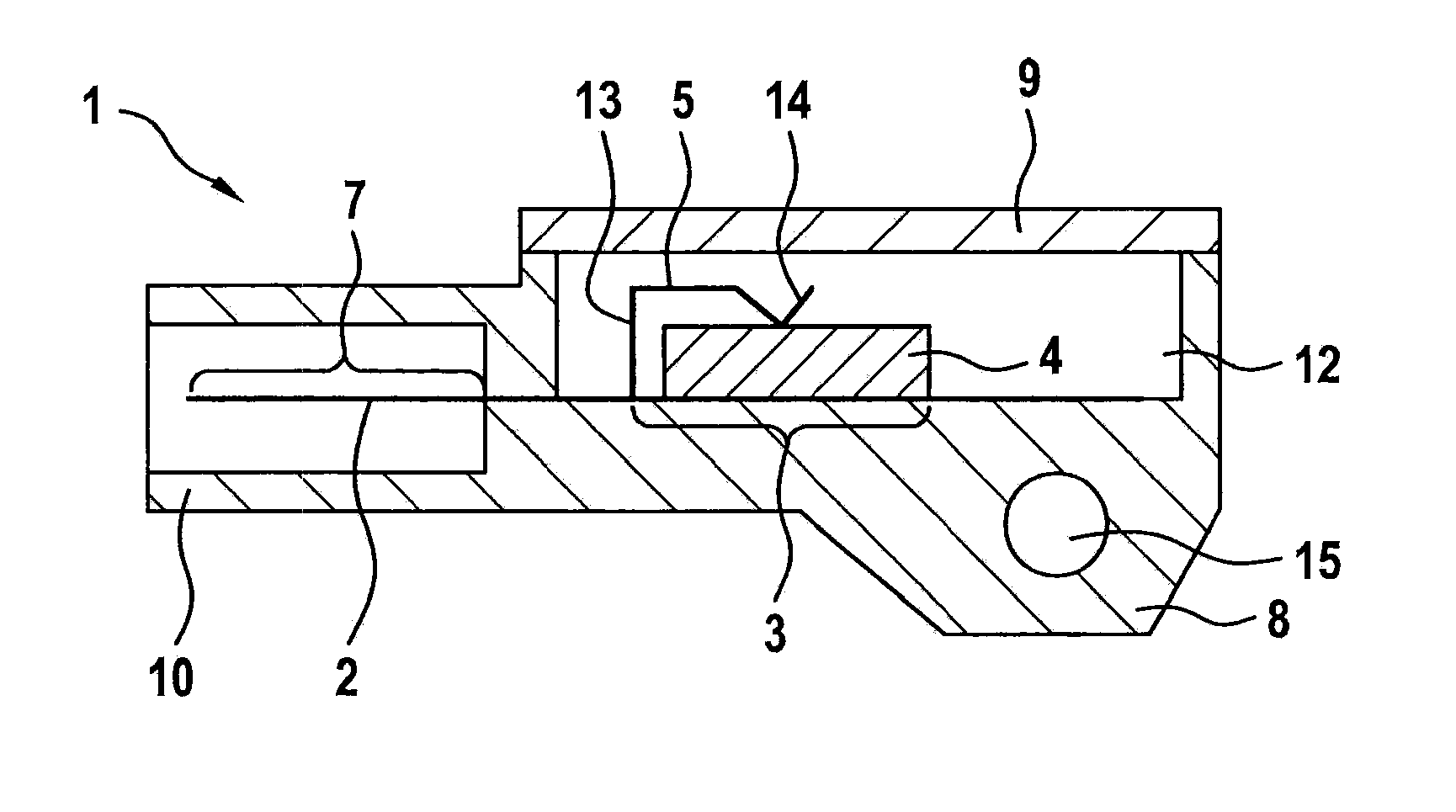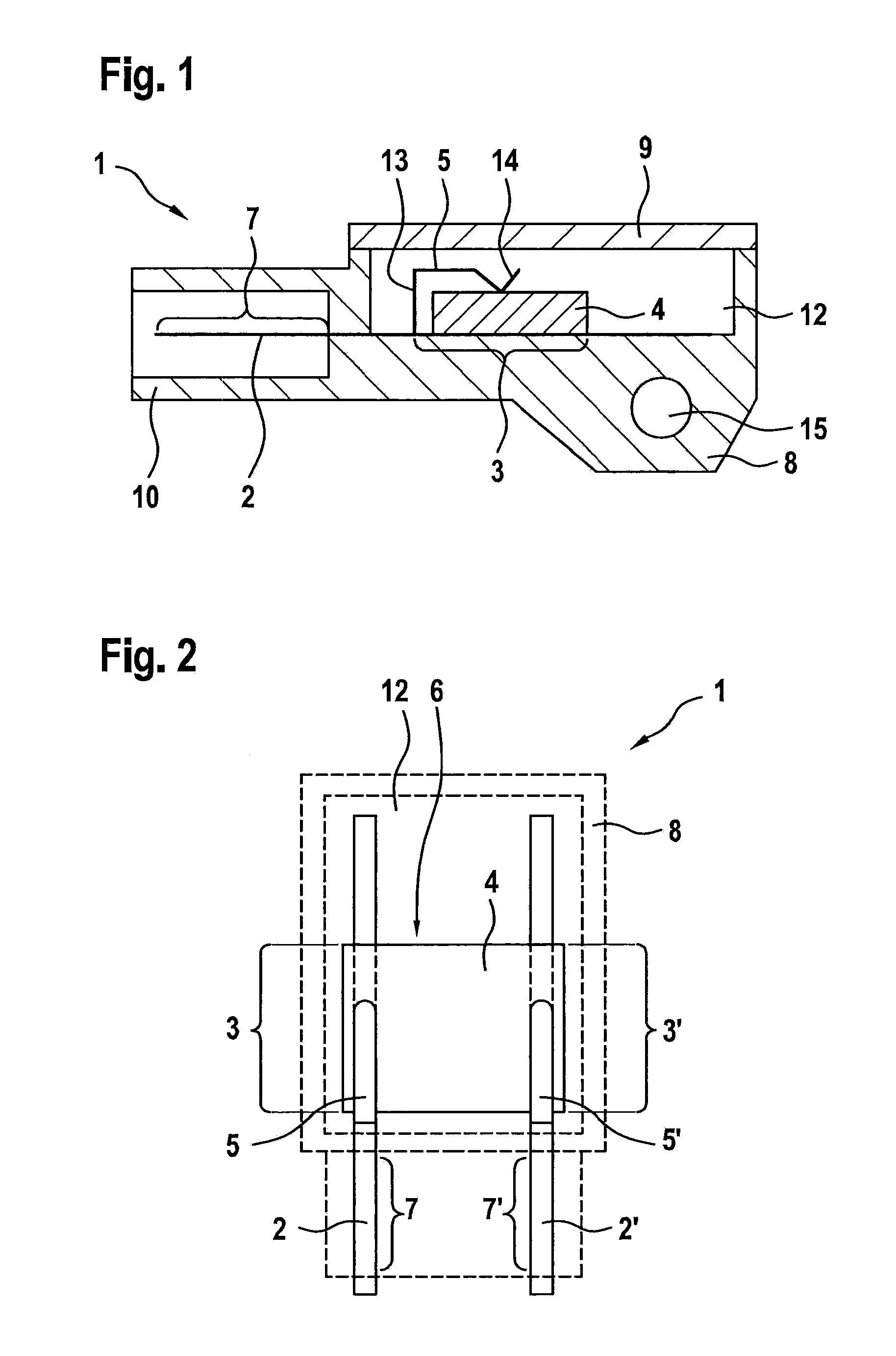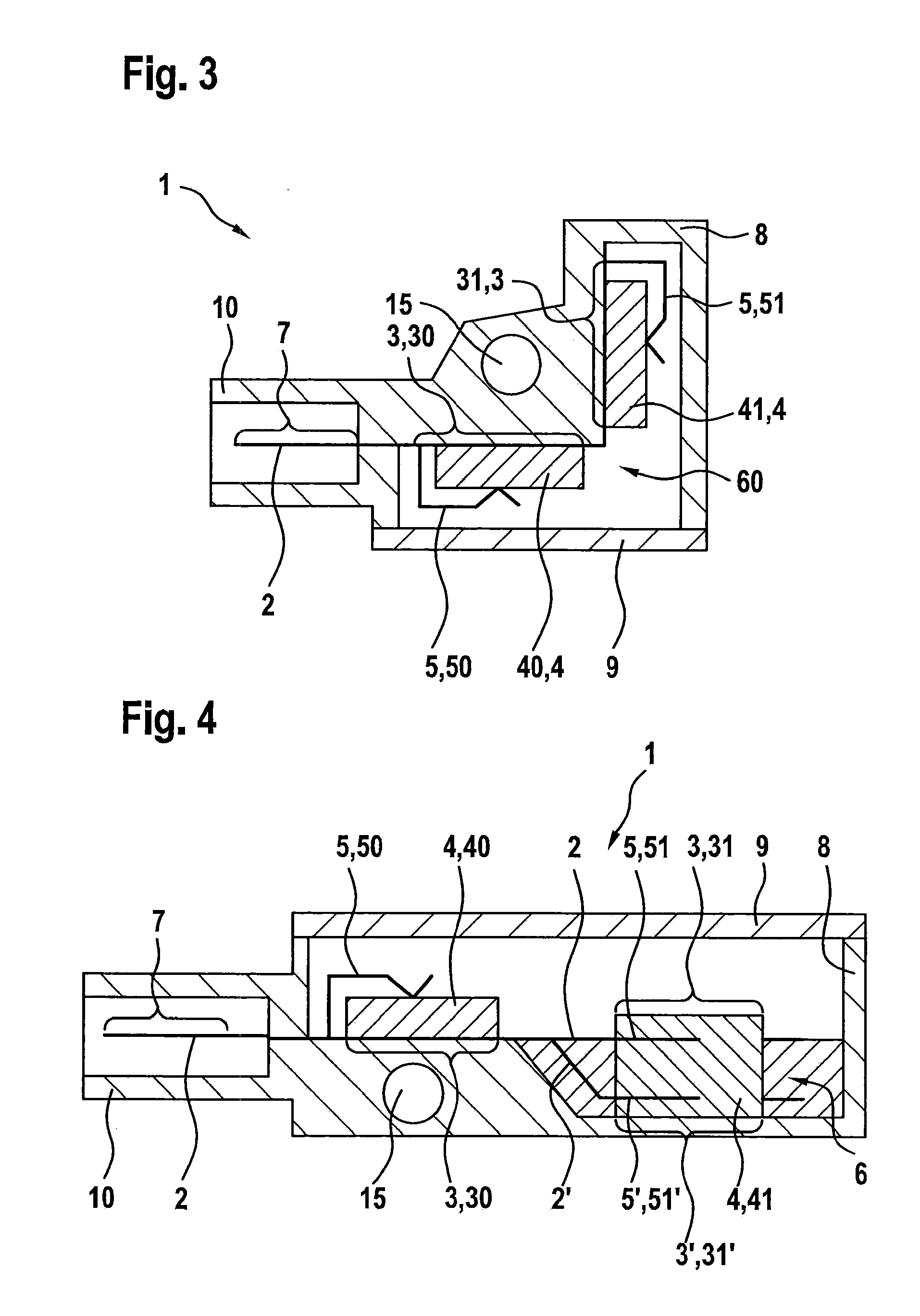Sensor module and method for producing a sensor module
a technology of sensor modules and sensors, applied in the field of sensors, can solve problems such as the influence of sensor characteristics of sensor elements, and achieve the effects of improving the measurement accuracy of sensor elements, simple and rapid manner, and being easy to realiz
- Summary
- Abstract
- Description
- Claims
- Application Information
AI Technical Summary
Benefits of technology
Problems solved by technology
Method used
Image
Examples
Embodiment Construction
[0020]In the various figures, identical parts have always been provided with the same reference symbols and are therefore usually labeled or mentioned only once.
[0021]FIG. 1 shows a schematic sectional view of a sensor module 1 according to a first specific embodiment of the present invention. Sensor module 1 has a line part 2 produced in a first production step, which is developed as metallic line part. Line part 2 has a receiving region 3, in which a sensor element 4 is to be affixed in force- and form-fitting manner. In addition, sensor element 1 has a further line part 2′, which cannot be seen in the illustration in FIG. 1 for reasons of perspective, since further line part 2′ is situated behind line part 2 when viewed from the reader's perspective. Further line part 2′ has a similar design as line part 2. In a second production step, line part 2 and further line part 2′ are partially extrusion-coated with a plastic material in an injection-molding process, so that a housing 8 i...
PUM
| Property | Measurement | Unit |
|---|---|---|
| angle | aaaaa | aaaaa |
| angle | aaaaa | aaaaa |
| axis of rotation | aaaaa | aaaaa |
Abstract
Description
Claims
Application Information
 Login to View More
Login to View More - R&D
- Intellectual Property
- Life Sciences
- Materials
- Tech Scout
- Unparalleled Data Quality
- Higher Quality Content
- 60% Fewer Hallucinations
Browse by: Latest US Patents, China's latest patents, Technical Efficacy Thesaurus, Application Domain, Technology Topic, Popular Technical Reports.
© 2025 PatSnap. All rights reserved.Legal|Privacy policy|Modern Slavery Act Transparency Statement|Sitemap|About US| Contact US: help@patsnap.com



